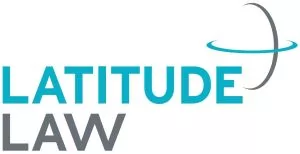On 22 October 2020, new Immigration Rules were published. The changes are extensive and apply to a large number of UK immigration categories, including how religious organisations sponsor religious workers from outside of the UK.
Here, Latitude Law associate solicitor Gemma Tracey takes a look at nine key things about these changes, and how they may affect individuals and sponsors.
- There's a slight change to the names of the immigration routes; under the current immigration system, religious workers are either sponsored under the Tier 2 (Minister of Religion) or Tier 5 (Temporary Worker) Religious Worker category. These will be changing to T2 Minister of Religion and T5 (Temporary Worker) Religious Worker, so not a significant change.
- Along with slightly different names, the location of the Rules will be different. Currently, the majority of requirements are contained within Part 6A of the Immigration Rules, with additional requirements contained in Appendices. This means it can often be difficult for organisations to follow Immigration Rules. Under the new system, the majority of requirements will be contained in Appendix T2 (Minister of Religion) or Appendix T5 (Temporary Worker) Religious Worker. Although don't be fooled, of course we'll still need to refer to other parts / appendices when reviewing general grounds for refusal, those who need to undergo screening for active pulmonary tuberculosis, complying with the financial and English language requirements, and also when assessing continuous residence and knowledge of language and life in the UK for settlement. The Home Office is currently working on a simplified rewrite of the Immigration Rules; that can't come soon enough.
- It is already common knowledge that the current Tier 2 category
is a route for those who will be undertaking mainly pastoral duties
in the UK. On the other hand, the Tier 5 route enables
religious workers to undertake pastoral and non-pastoral
duties, and is for those with less experience. This will
still be the case under the new T2 and T5 categories, although the
new Rules provide a more detailed explanation. They confirm
that the T2 (Minister of Religion) route will only be open to those
who will be playing a key leading role within
their faith-based organisation or religious order in the UK.
The Rules also define specific activities that T2 (Minister of
Religion) migrants cannot undertake. Once again, T5
workers can undertake non-pastoral work, including work which
supports their sponsor, as opposed to undertaking a key leading
role within the organisation. The T5 route is not open to
those who will mainly be leading a congregation and preaching; such
workers are expected to apply under the T2 (Minister of Religion)
category. I don't think anything is really changing here,
but we do have more clarification, which I guess is helpful.
- Once again, the new Rules confirm the precise information that a T2 or T5 Certificate of Sponsorship (CoS) must contain, so it's always worthwhile seeking legal advice to ensure the content of the CoS is sufficient before assigning it to a worker or member of your organisation.
- A somewhat welcome change is the partial removal of the Resident Labour Market Test (RLMT), but this change only applies to T2 (Minister of Religion) applications and not T5 Religious Worker applications. Usually, the Home Office imposes more stringent requirements on those relocating to the UK on a more permanent basis, so it's surprising that this change only affects T2 (Minister of Religion) migrants, the category that leads to settlement. The RLMT requires sponsors to advertise the proposed role to the local labour market before assigning a CoS to a non-EEA migrant; sponsors looking to hire T5 Religious Workers will need to ensure compliance with the RLMT or rely on an RLMT exemption. Latitude Law can assist with ensuring compliance with the RLMT / an exemption, so contact us to discuss this further.
- The Home Office announced the removal of the cooling-off period for certain categories, including the T2 Minister of Religion and the Skilled Worker categories, but this change does not apply to the T5 Religious Worker category. Such individuals must not have held entry clearance and been present in the UK as a Religious Worker or Charity Worker at any time during the 12 months immediately preceding submission of their application. So, T5 Religious Workers must still comply with the RLMT and are subject to the cooling-off period; I'm starting to wonder if the Secretary of State forgot to review and streamline the Rules that apply to them.
- Under the new system, it will be easier for individuals to switch into the T2 Minister of Religion category. Going forward, inexperienced religious workers could potentially secure entry clearance as T5 Religious Workers, and then switch into the T2 Minister of Religion category from inside the UK, once they are in a position to complete a key leading role within their faith-based organisation or religious order, and once their English language skills have improved. This is helpful, and could assist a large number of our clients.
- No change here, but an important reminder; as they do under the current system, applicants will need to comply with a genuineness requirement under the T2 and T5 categories. It's important that sufficient evidence and information is provided to support the application to prove that the applicant is capable of undertaking the proposed role.
- Finally, the changes to the Minister of Religion and Religious Worker categories will come into force on 1 December 2020. It's important that all applications submitted from this date comply with the new Rules, so don't hesitate to get in touch with us via our contact page, by calling 0161 234 6800 or by emailing info@latitudelaw.com.
The content of this article is intended to provide a general guide to the subject matter. Specialist advice should be sought about your specific circumstances.

